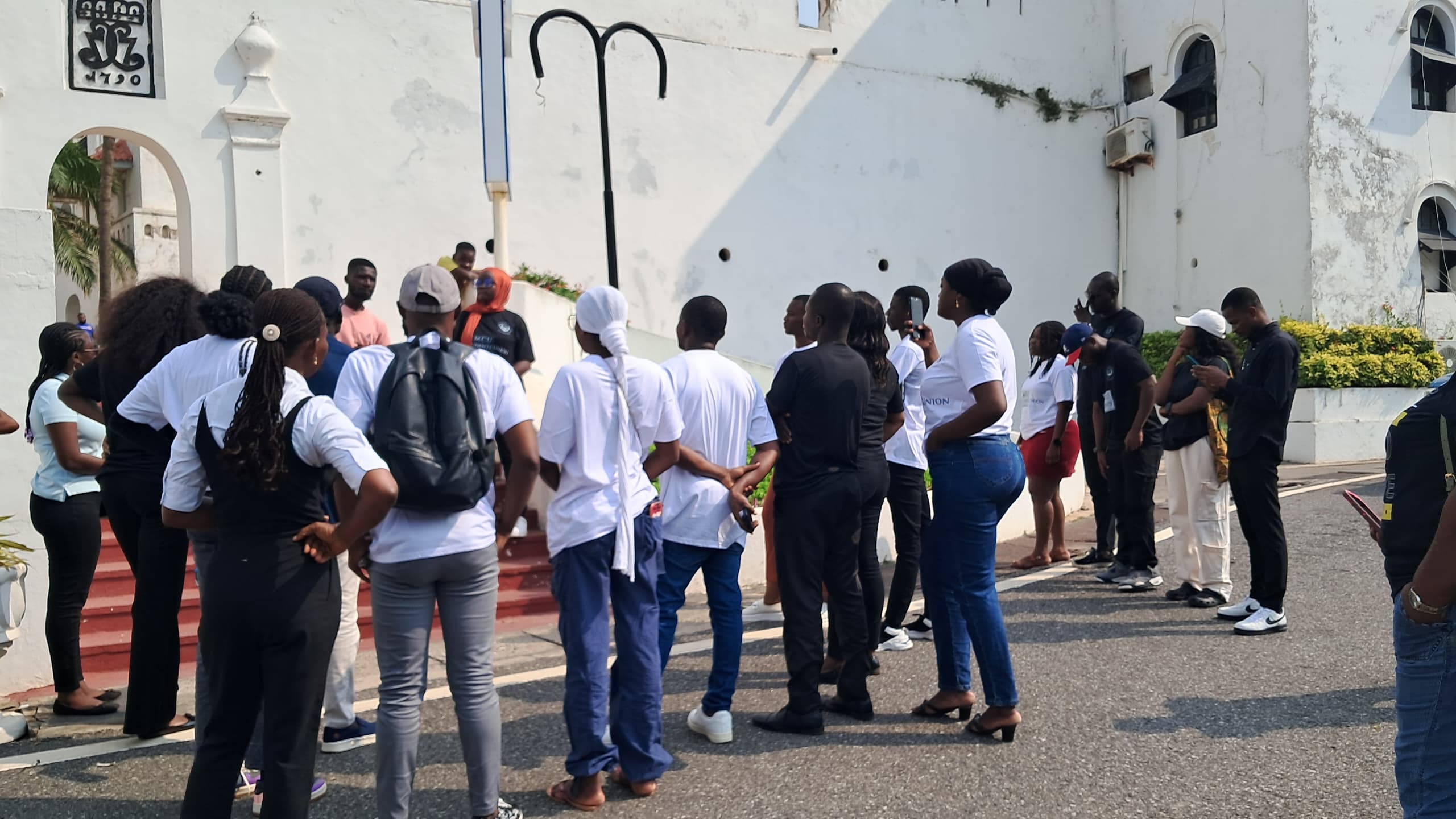Law Students Union Visit Nkrumah Mausoleum & Osu Castle
- July 15, 2024
- Daniel Mensah
- 0


On Saturday, 13th July, 2024, the MountCrest Law Students Union undertook an educational tour of the Kwame Nkrumah Memorial Park and Mausoleum and the Osu Castle, both in Accra.
The visit to the five-acre Memorial Park was to enhance their knowledge and understanding of the life, legacy and significance of Ghana’s first Prime Minister and President, Dr. Kwame Nkrumah. It was also to appreciate the monument as an important national landmark.
A leading advocate for Pan-Africanism, Dr. Nkrumah was a political revolutionary who inspired and supported freedom fighters across Africa, the south of the Saharah, to liberate their countries from the yoke of colonialism. Apart from the extensive development projects (schools, factories etc.) he initiated and built for Ghana, he is also credited with making the Black Race proud again.
The Memorial Park complex which was dedicated in 1992, is situated on the site of the former British colonial Polo Grounds where Dr. Nkrumah stood on the eve of 6th March, 1957, to declare Ghana’s independence. On the premises is his graveyard. It also has a museum that displays objects from various stages of his life.
The trip to Osu Castle was to learn more about its historical significance and cultural heritage. The castle, built in the Gold Coast by Denmark-Norway in 1659 as a trading post, was originally called the Christiansburg Castle. Named after the Danish King Christian IV who died in 1648, the Castle is a stone fort built to replace an earthern lodge that was erected by the then Swedish African Trading Company in the early 17th Century.
It was a slave post that centuries later, became the seat of the British colonial government.
In 1693, Nana Asamani of Akwamu led a revolt to seize the Castle, held it for one year before returning it to the Danes. From 1890 to 1901, it was used as a constabulary mess and later as a psychiatric asylum. In 1902 Christiansburg again became the seat of government.
In 1925, the British governor of the Gold Coast, Sir Gordon Guggisberg, built a room on the top floor of the north-western section of the Castle.
The Fort has changed ownership between Denmark-Norway, Portugal, the Akwamu, Great Britain and finally post-independence Ghana. The Castle remained the seat of government until 2013, when the Ghana government moved its offices to the Flagstaff House.
The Osu Castle has been designated as a UNESCO World Heritage Site.
Overall, the students said the two trips enabled them to develop a deeper appreciation for Ghana’s rich history and architecture. It also fostered a stronger sense of national pride and identity in them.







